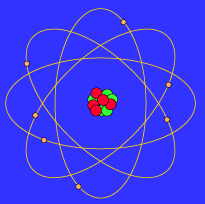The logical starting point in the discussion of oxidation-reduction reactions is the atom, and the terms and conventions used by chemists in describing this phenomenon.
All atoms are electrically neutral even though they are comprised of charged, subatomic particles. The terms, oxidation state or oxidation number, have been developed to describe this "electrical state" of the atom. The oxidation state or oxidation number of an atom is simply defined as the sum of the negative and positive charges in an atom. Since every atom contains equal numbers of positive and negative charges, the oxidation state or oxidation number of any atom is always zero. This is illustrated by simply totaling the opposite charges of the atoms as shown by the following examples.

Note, in every instance the sum of the positive and negative charges is zero; hence the oxidation state of any atom is always zero.



No comments:
Post a Comment